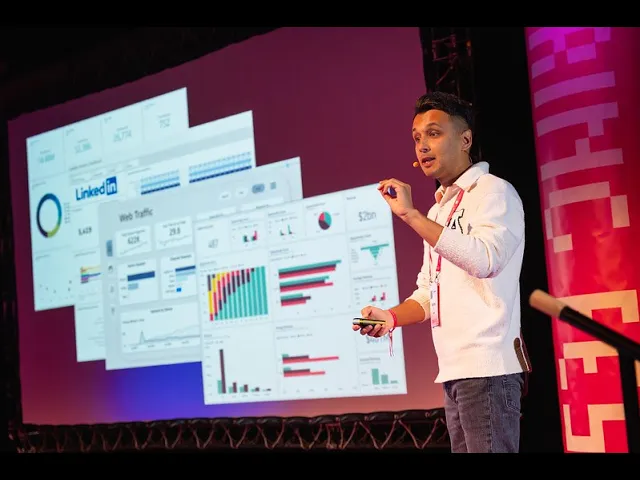
4 Examples of Data Storytelling With Graphs
Feb 17, 2025

Andrey Vinitsky
Co-founder & CEO
How many times have you heard people asking for more data, more dashboards, more data engineers, more self-serve tools, “a single source of truth,” etc.?
Despite investing months of work and hundreds of thousands of dollars a year, companies still struggle to use data to drive actions.
Instead, people are more confused than ever, more intimidated by data, and rely on their gut to make decisions.
In fact, internal research from Tableau shows the #1 way business users find answers to data questions is by asking a teammate, not visiting a dashboard.
The problem isn’t just having data, it’s that people can’t find or make sense of it. When data is scattered, overwhelming, or unclear, teams default to gut decisions. Data storytelling fixes this by turning surfaced insights into clear, actionable narratives that drive results.
Data storytelling transforms raw data into clear, actionable insights, helping businesses:
Remove ambiguity from what the data is saying or what the data means to how we focus on driving actions.
Foster alignment across teams by transforming data into a shared, compelling story.
Speed up decision-making by distilling complex data into clear, actionable insights.
I’ll show you four examples of how to get good at data storytelling and common mistakes to avoid. When your data is transformed into clear, compelling narratives that resonate, your audience will be much more likely to act on your insights.
Example 1: Graph without a Story vs. Graph with a Story

Before:
A bar chart showing quarterly product sales overwhelms the audience with too much data. Each product’s performance is visible, but there’s no clear takeaway—leaving people confused and asking endless questions.
After:
The same data is transformed into a clear story: “Sales for Product A have increased 2.5x since Q1.” A redesigned chart highlights Product A’s growth with annotations, focus lines, and a compelling title.
Key Lessons:
Get to the point. Use a title that conveys your key insight upfront.
Don’t show all the data. Focus on what’s most relevant to your audience.
Guide attention. Use annotations, arrows, and highlights to make your message clear.
Example 2: Graph for Data Analysts vs. Graph with a Story for Your Audience

For Analysts:
A complex line chart shows trends for marketers, founders, and product managers over time. Analysts can explore hidden patterns, but non-experts feel lost.
For Everyone Else:
The chart is simplified to highlight one key insight: “The number of new founders has reduced by 72%." A bold annotation and decluttered visuals make the message clear at a glance.
Key Lessons:
Tailor your presentation. Analysts need detail; your audience needs clarity.
Simplify. Focus on one insight per graph.
Use visuals to guide attention. Arrows and annotations help audiences understand your point instantly.
Example 3: Dashboards vs. Graph with a Story

Dashboards:
Packed with charts and filters, dashboards are great for analysts but require too much effort from non-expert audiences.
Data Stories:
Focus on one chart and one insight, such as: “Sales for Product A increased 2.5x in Q4.” Data stories simplify communication, making insights impossible to ignore.
Key Lessons:
Dashboards are for exploration; data stories are for communication.
Let data stories do the heavy lifting for your audience.
Use tools like Graphy to turn dashboards into clear, actionable narratives.
Example 4: Graph without Context vs. With a Story

Without a Story:
A graph shows ARR growth over time but lacks context or actionable insights. Stakeholders see the data but don’t know what it means.
With a Story:
“Invest in marketing to reach $3.2M ARR in 5 months.” The same graph is enhanced with a bold title, projections, and a clear call to action. Instead of a wall of data, it’s a roadmap for growth.
Key Lessons:
Highlight the insights that matter.
Simplify your message: one graph, one takeaway.
Use visuals to reinforce your story and guide decisions.
Best Practices for Business Data Storytelling
1. Start with a Clear Narrative
Think of your data story as a journey with a beginning, middle, and end:
Beginning: What’s the key question your audience is asking?
Middle: What data answers this question?
End: What action should your audience take?
2. Simplify Your Visuals
Avoid clutter and focus on clarity:
Use familiar chart types like bar or line graphs.
Strip away unnecessary details (e.g. gridlines, excess labels).
Highlight the most important data points with annotations.
3. Make It Actionable
Every data story should answer: “What should we do next?”
Use call-to-action titles (e.g., “Increase marketing spend to reach $3.2M ARR”).
4. Use the Right Tools
Tools like Graphy make it easy to:
Highlight key insights with annotations.
Simplify visuals for clarity.
Turn raw data into stories that inspire action.
Transform Your Business with Data Storytelling
At Turing Fest, I shared why dashboards alone don’t drive action. Companies spend millions on data tools, yet people still struggle to engage with insights.
This talk breaks down how data storytelling makes insights clear, actionable, and impossible to ignore.
With tools like Graphy, every business can turn raw data into actionable narratives that inspire action. Don’t just share your data—tell a story that makes an impact.
Ready to elevate your data storytelling? Try Graphy today and see the difference clear communication can make.








